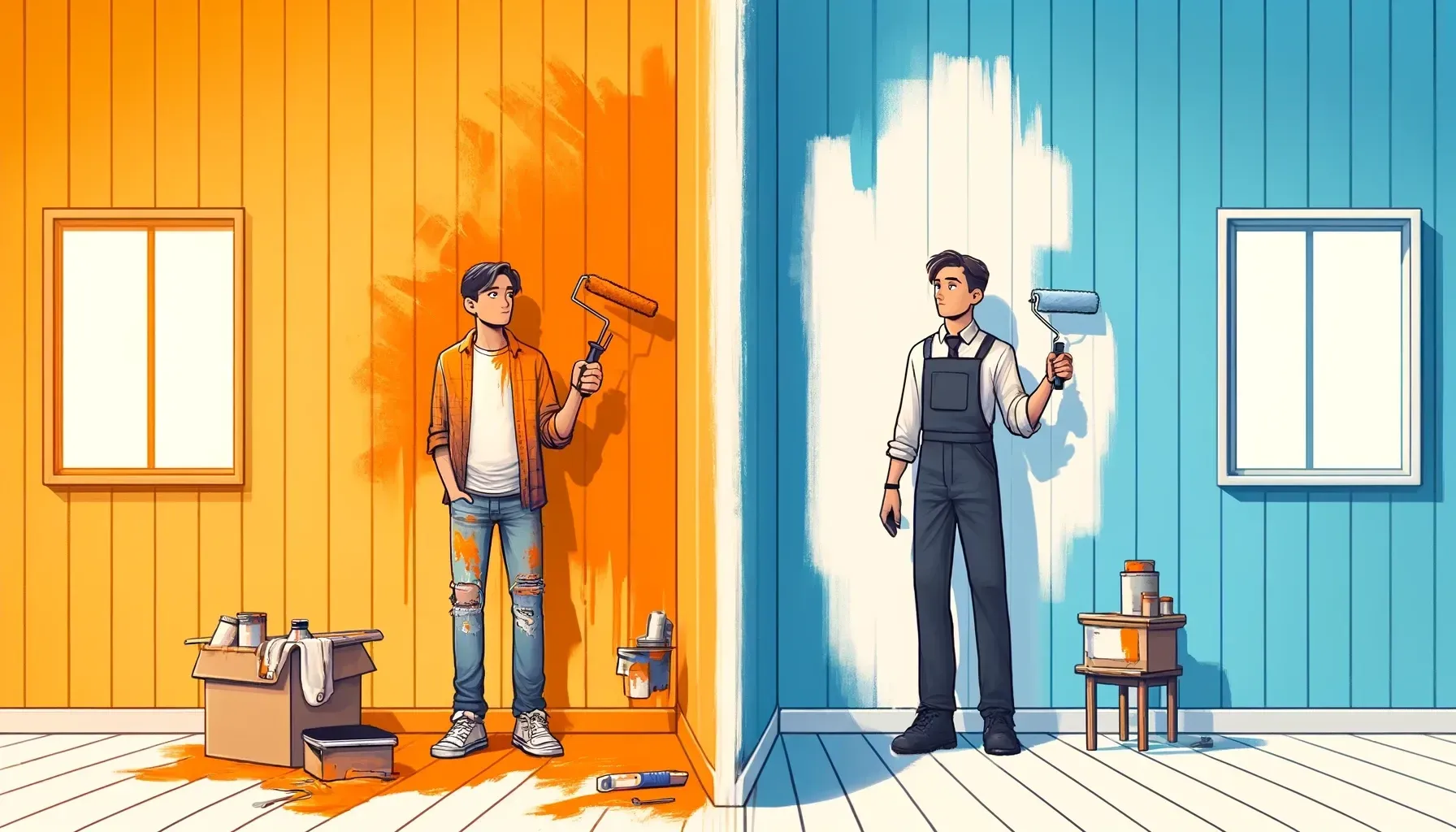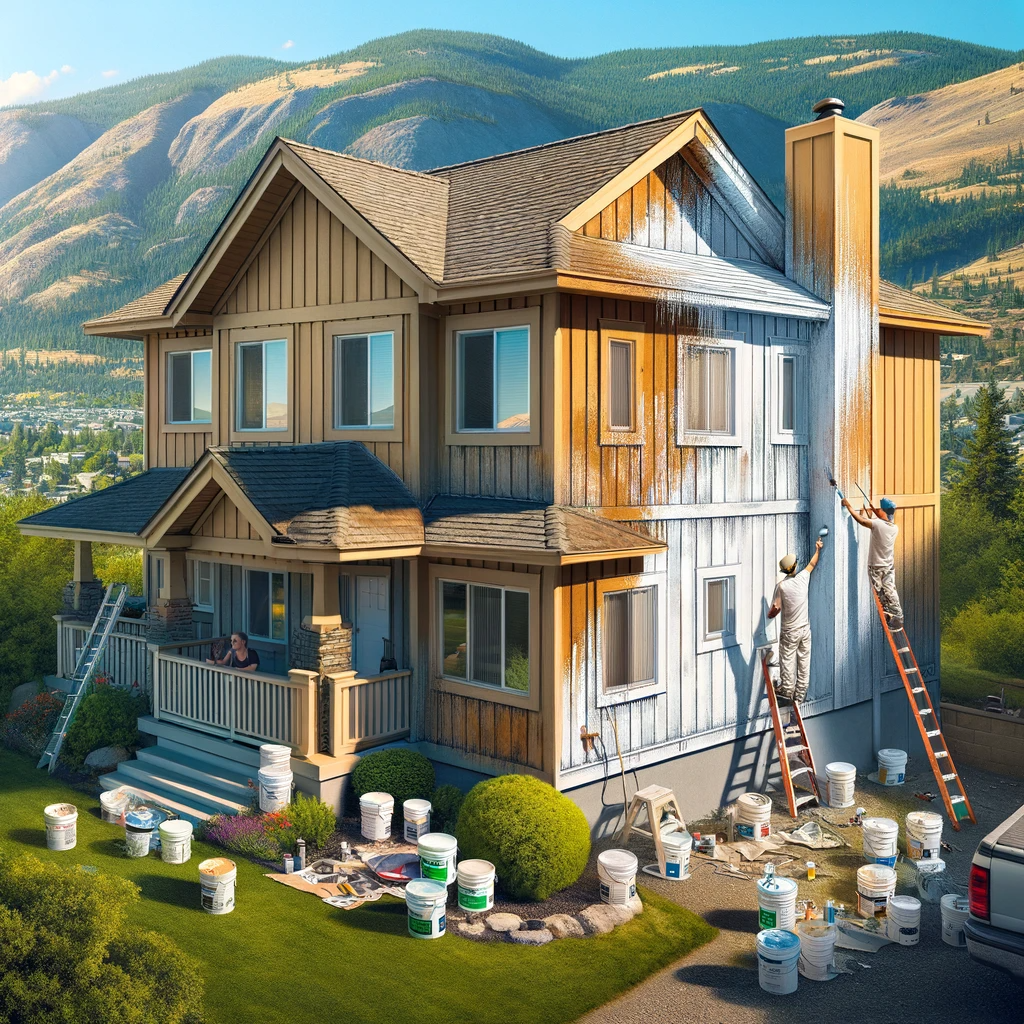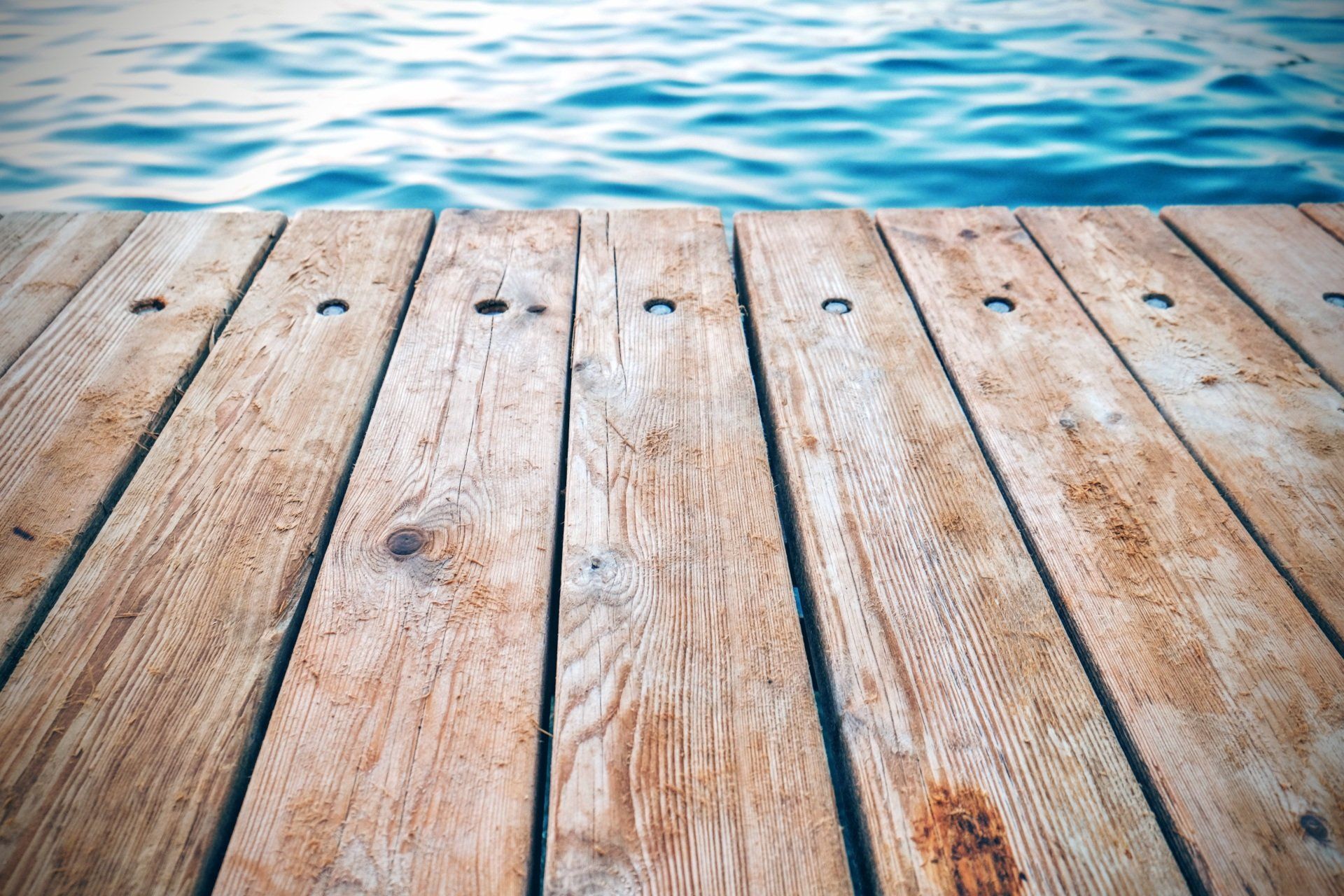Extend the Life of Your Home's Paint
As a diligent homeowner, you recognize the significance of maintaining both the interior and exterior paint of your residence. The paint on your walls not only enhances the aesthetics but also plays a vital role in protecting your home. In this guide, we will delve into strategies to ensure both your interior and exterior paint jobs remain fresh and vibrant for years to come.
1. Cleaning and Preparation: The Fundamental Step
Whether you're tackling interior or exterior paint maintenance, cleanliness is paramount. Start by cleaning the surfaces meticulously. For interior walls, use a mild detergent solution and a sponge to remove dust and stains. For exterior surfaces, a hose or pressure washer can effectively remove dirt and grime. Allow ample time for drying. For additional information on surface prep check out this article!
2. Inspection and Repair: Addressing Imperfections
Thoroughly inspect both your interior and exterior painted surfaces. Look for cracks, peeling, or any signs of wear. Address these issues promptly to prevent further deterioration. For both indoor and outdoor spaces, fill in any cracks or holes with an appropriate filler or putty. Sand the repaired areas to achieve a smooth texture. Don't forget to prime the fixed spots before repainting.
3. Quality Paint Selection: The Backbone of Durability
Whether you're painting inside or outside, the choice of paint matters. Invest in high-quality, durable paint that can withstand the specific demands of each environment. Interior paints are typically latex-based for their ease of use, while exterior paints should be resilient to weather, UV rays, and moisture. Check out our other post on choosing the type of paint to use for your job.
4. Proper Application: The Art of Brushwork
The application process is crucial for both interior and exterior paint jobs. Use top-notch brushes, rollers, and tools. Apply paint in thin, even coats, working systematically. Avoid heavy applications to prevent premature peeling.
5. Regular Maintenance: Your Ongoing Duty
Both interior and exterior painted surfaces require routine care. Here's what to consider:
- Cleaning: Periodically clean interior walls with a gentle cleaner and a soft cloth to remove dust and marks. For exteriors, consider pressure washing to remove dirt and stains.
- Inspection: Regularly inspect your painted surfaces for signs of wear, especially in high-traffic areas. Timely attention can prevent more extensive problems.
- Touching Up: Keep a record of the paint colors and finishes used in your home. Small touch-ups can maintain a fresh appearance.
6. Protection Against the Elements: Interior and Exterior Shields
Both your interior and exterior paint can benefit from additional protection. Consider applying a clear sealant for interior surfaces, especially in high-moisture areas like bathrooms and kitchens. For exteriors, use a waterproofing product to safeguard against rain, snow, and UV damage.
7. Seasonal Considerations: Adapting to Weather
Be mindful of seasonal changes. In winter, protect interior paint from excessive moisture, and in summer, guard against fading from strong sunlight. Implement preventive measures to mitigate these issues.
8. Professional Assistance: Expert Guidance
When in doubt or dealing with extensive damage, don't hesitate to consult with a professional painting service. Their expertise can help you navigate both interior and exterior paint maintenance effectively.
9. Paint Types and Their Chemistry: Choosing the Right Formula
Understanding the types of paints and their chemical compositions is essential when it comes to both interior and exterior paint maintenance. Different paint types are formulated for specific surfaces and conditions. Let's explore some common paint types and how they interact with various surfaces:
a. Latex (Water-Based) Paint:
Chemistry: Latex paint, also known as water-based paint, contains synthetic polymers suspended in water. It's environmentally friendly and dries quickly due to water evaporation.
Interior Use: Latex paint is perfect for most interior surfaces, including walls and ceilings. It's low in odor, easy to clean, and resists yellowing over time.
Exterior Use: While not as durable as oil-based paints, modern latex paints are suitable for many exterior surfaces like wood and stucco. They offer excellent weather resistance and flexibility.
b. Oil-Based (Alkyd) Paint:
Chemistry: Oil-based or alkyd paint uses a solvent, such as mineral spirits, to suspend synthetic or natural oils like linseed or soybean oil. It dries by oxidation, which takes longer than water evaporation.
Interior Use: Oil-based paints are ideal for high-traffic areas such as kitchen cabinets, trim, and doors due to their durability and smooth finish. However, they can emit strong fumes during application and require longer drying times.
Exterior Use: Alkyd paints are suitable for exterior surfaces that need superior protection against harsh weather conditions. They adhere well to metals and wood but may yellow over time.
c. Acrylic Paint:
Chemistry: Acrylic paint is water-based but uses acrylic polymers as binders. It's known for its flexibility and fast drying time.
Interior Use: Acrylic paint is commonly used for interior walls and is available in various finishes, from matte to high-gloss. It resists cracking and fading and is easy to clean.
Exterior Use: Exterior acrylic paints are popular for siding, trim, and outdoor furniture. They offer excellent UV resistance and are less prone to mildew growth.
d. Enamel Paint:
Chemistry: Enamel paint can be oil-based or water-based, but it's known for its hard, glossy finish. It typically contains higher levels of resins and pigments.
Interior Use: Enamel paints are often used for cabinets, doors, and furniture due to their smooth, durable finish. Water- based enamels are easier to clean and have less odor than oil-based versions.
Exterior Use: For exteriors, oil-based enamel paints provide a glossy, protective finish. They work well on doors, windows, and metal surfaces.
e. Specialty Paints:
Chemistry: Specialty paints include epoxy, urethane, and elastomeric coatings. These paints are designed for specific purposes and surfaces.
Interior and Exterior Use: Epoxy paints are exceptionally durable and used on surfaces like garage floors. Urethane paints offer high resistance to abrasion and chemicals and are often used on floors and industrial equipment. Elastomeric coatings are flexible, waterproof, and designed for masonry and stucco exteriors.
Choosing the right paint type for your interior and exterior surfaces depends on factors such as durability, appearance, and the surface's specific needs. Always consult with professionals or your local paint supplier to ensure you select the best paint type for your project.
Incorporating this knowledge of paint types and their interactions with different surfaces will not only help you achieve a beautiful finish but also ensure the longevity of your home's interior and exterior paint. With the right paint chemistry, proper application, and regular maintenance, your home will continue to exude elegance for years to come, both inside and out.
In summary, maintaining both interior and exterior paint involves diligent preparation, quality materials, regular upkeep, and preventive measures. By following these steps, you'll not only keep your home looking fresh and vibrant but also preserve its structural integrity for years. Remember, attentive care today can save you from major painting projects in the future, ensuring your home remains a source of pride and comfort, both inside and out.


